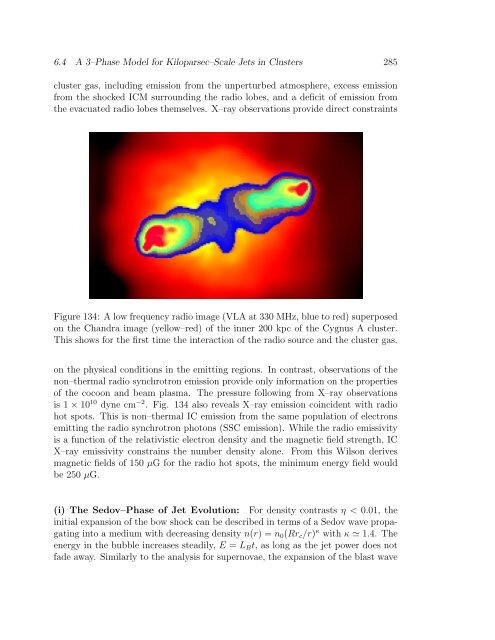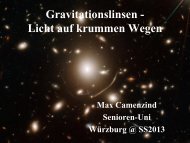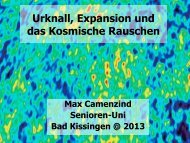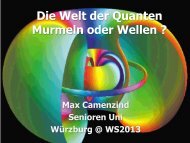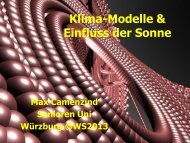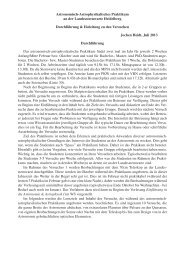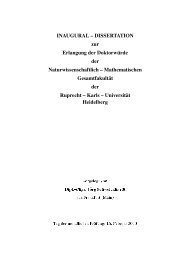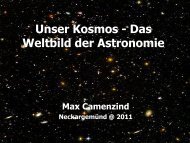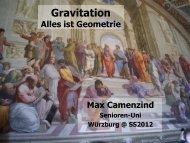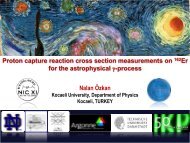Contents List of Figures
Contents List of Figures
Contents List of Figures
Create successful ePaper yourself
Turn your PDF publications into a flip-book with our unique Google optimized e-Paper software.
6.4 A 3–Phase Model for Kiloparsec–Scale Jets in Clusters 285<br />
cluster gas, including emission from the unperturbed atmosphere, excess emission<br />
from the shocked ICM surrounding the radio lobes, and a deficit <strong>of</strong> emission from<br />
the evacuated radio lobes themselves. X–ray observations provide direct constraints<br />
Figure 134: A low frequency radio image (VLA at 330 MHz, blue to red) superposed<br />
on the Chandra image (yellow–red) <strong>of</strong> the inner 200 kpc <strong>of</strong> the Cygnus A cluster.<br />
This shows for the first time the interaction <strong>of</strong> the radio source and the cluster gas.<br />
on the physical conditions in the emitting regions. In contrast, observations <strong>of</strong> the<br />
non–thermal radio synchrotron emission provide only information on the properties<br />
<strong>of</strong> the cocoon and beam plasma. The pressure following from X–ray observations<br />
is 1 × 10 10 dyne cm −2 . Fig. 134 also reveals X–ray emission coincident with radio<br />
hot spots. This is non–thermal IC emission from the same population <strong>of</strong> electrons<br />
emitting the radio synchrotron photons (SSC emission). While the radio emissivity<br />
is a function <strong>of</strong> the relativistic electron density and the magnetic field strength, IC<br />
X–ray emissivity constrains the number density alone. From this Wilson derives<br />
magnetic fields <strong>of</strong> 150 µG for the radio hot spots, the minimum energy field would<br />
be 250 µG.<br />
(i) The Sedov–Phase <strong>of</strong> Jet Evolution: For density contrasts η < 0.01, the<br />
initial expansion <strong>of</strong> the bow shock can be described in terms <strong>of</strong> a Sedov wave propagating<br />
into a medium with decreasing density n(r) = n0(Rrc/r) κ with κ 1.4. The<br />
energy in the bubble increases steadily, E = LBt, as long as the jet power does not<br />
fade away. Similarly to the analysis for supernovae, the expansion <strong>of</strong> the blast wave


